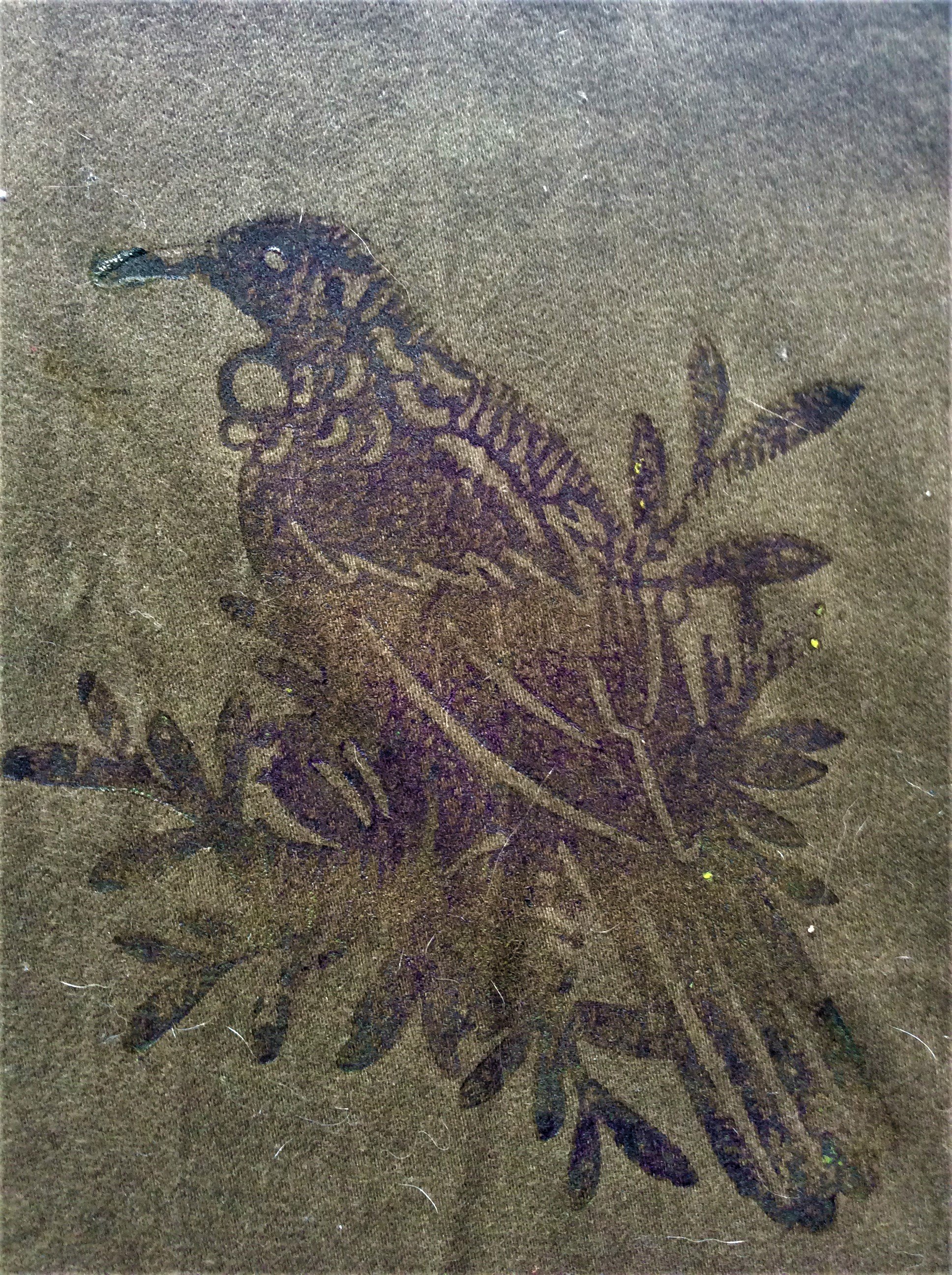Rubbing Plates
This fabric was made by using Shiva Paint sticks and commercial rubbing plates on black fabric. I intend to add decorative machine stitch to this so it is sitting in my “waiting to complete piie”
Making rubbings is an age old process of transferring patterns to a substrate be it paper or fabric. Some people collect rubbings of access plates on the roads. Shelley Stokes of Cedar Canyon Textiles (Mexico formerly US) has perfected the art. She uses Shiva paint sticks, an oil based paint in a stick form like a crayon. You need to peel the skin that forms off the top (or side) of the stick to be able to use it. The skin provides a protective covering that stops the stick from drying out and gives much longer longevity to the medium. If you do not care for the oil smell, gelato sticks also work well but they are very soft and you need to be careful not to overdo them. In the circular example below you can see how I overdid the rubbing a bit - at least to my eyes.
In the example above I have used commercially prepared rubbing plates but there are endless items around the house that will create interesting patterns to take rubbings from. Below are a few I found without really looking: a plastic table mat in a leaf design, a cardboard based “plate” (from a previous project with thin mdf cut circles) and some coarse mesh. I have used gelatos in this example.
I keep a large plastic bin with lots of texture “things” like the bottom of trays from supermarket food that often come in handy for printmaking and texture. I often pick up things from the thrift store that end up in this bin and every once in a while I have to have a cull as there is too much “stuff” to fit. My daughter has a gift store and sometimes thin cut decorations (like Christmas tree decorations) or small wall hangings provide a perfect option for texture plates.

![IMG_6596[1].JPG](https://images.squarespace-cdn.com/content/v1/639f6bda61e0456d11776132/1681593789204-LU1A3C14NP48MRFRPTR1/IMG_6596%5B1%5D.JPG)
![IMG_6595[1].JPG](https://images.squarespace-cdn.com/content/v1/639f6bda61e0456d11776132/1681593811157-WYAEG0YVQ1PYT4DKC4K2/IMG_6595%5B1%5D.JPG)
